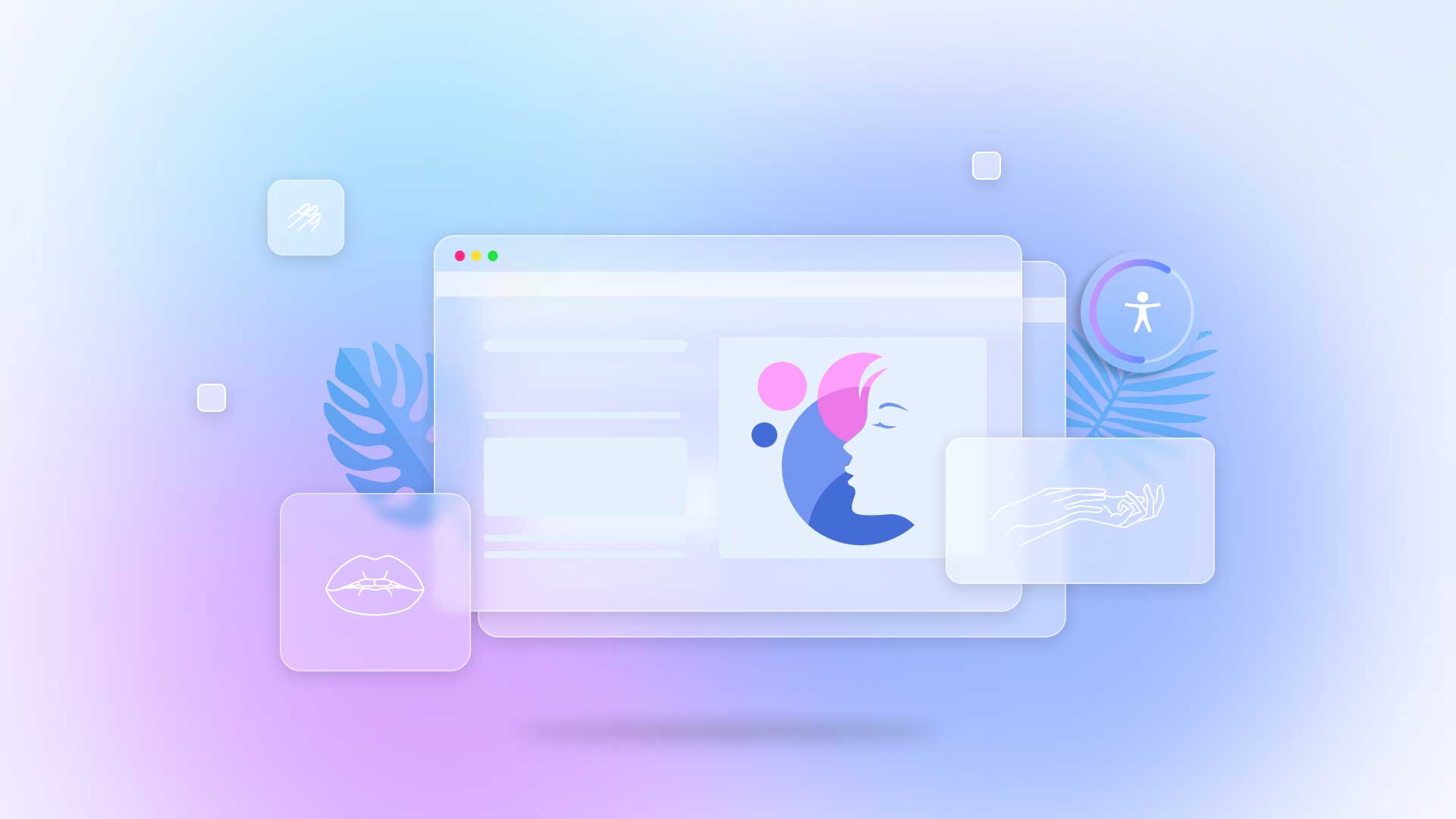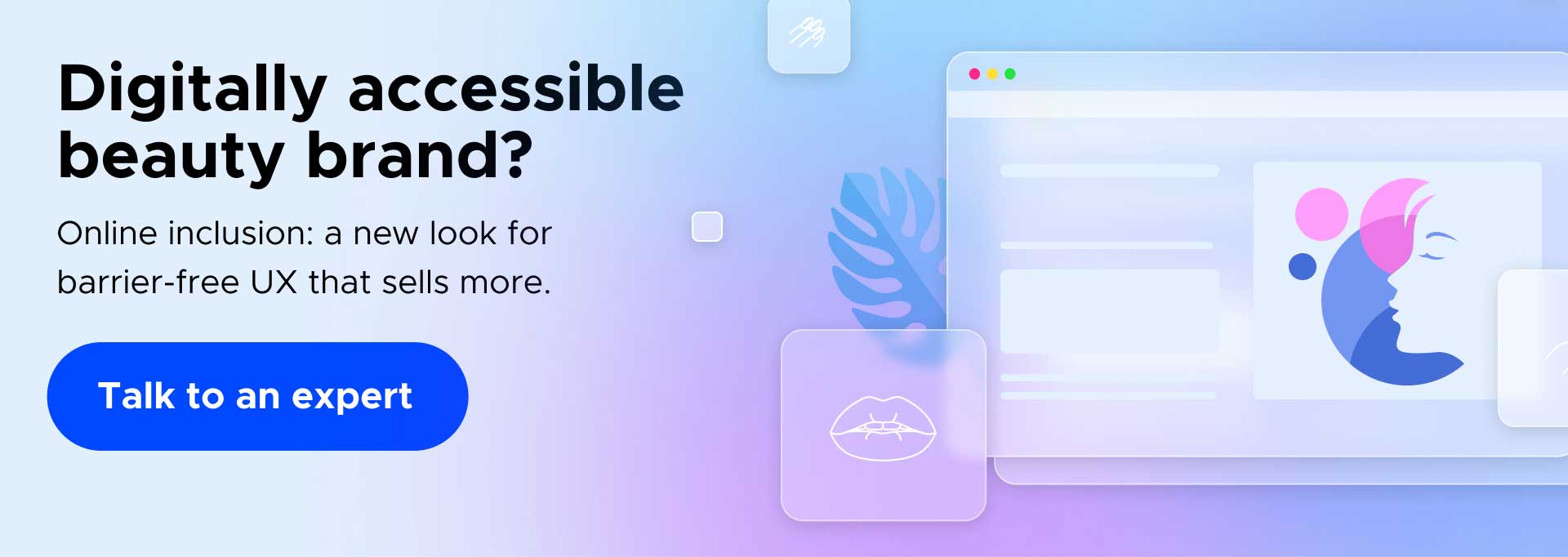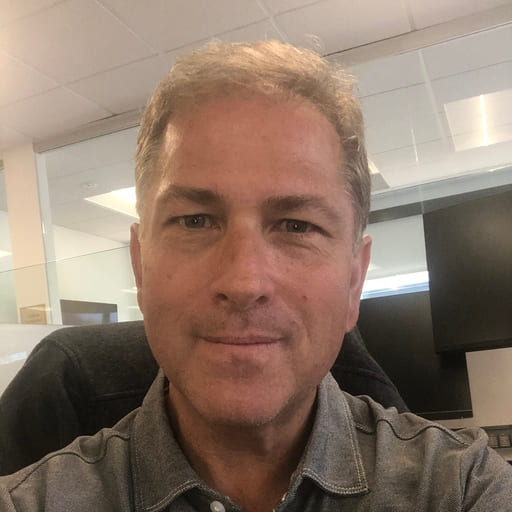How Accessibility is Giving the Beauty Industry a New Look

‘Beauty is for everyone.’ It’s a message that renowned beauty brand, Dove, has used as its slogan, but, despite their inclusive motto, the doors to the beauty industry have been firmly closed for people, especially people with disabilities.
Despite widespread popularity of beauty products, diversity, inclusion and accessibility haven’t always taken centre stage. For decades, the status quo for beauty aesthetics has been one-dimensional, showcasing a set of beauty standards that excluded many individuals.
In this blog, we’ll take a walk through how far businesses are reaching more diverse and inclusive audiences. Let’s dive in.
How Marketing Beauty Products is Changing
Modern consumers of beauty products are showing more loyalty to brands that are committed to diversity, equity and inclusion (DEI) initiatives. Diversity in the fashion industry is on the rise, with recent efforts addressing the exclusion of people with disabilities.
Consumer values have evolved, pushing beauty brands to shift their mindsets to promote accessible products that challenge the status quo and foster inclusion. It’s these beauty brand pioneers who will be the clear winners.
There is now a growing movement that has impacted exciting innovations across the industry’s marketing efforts, with many beauty brands featuring people with disabilities as a focal part of their product launches. This has resulted in a positive impact on engagement and brand performance.
5 Ways the Face of the Beauty Industry has Changed
There is much opportunity for beauty brands to reach and connect with people, regardless of their physical ability. The technological advancements shaping the space are paving the way for the future of beauty, breaking down barriers and causing a positive sea change in accessibility.
Here are 5 fashion and beauty brand breakthroughs we’ve noticed making waves in the industry:
-
Tommy Hilfiger Fashion
Tommy Hilfiger has made inclusivity and accessible fashion central to his brand. He has launched a line of clothing customized for people with disabilities, featuring one-handed zippers, Velcro and magnetic buttons, offering consumers function and fashion.
-
Fenty Beauty
The innovative launch of Fenty Beauty has re-defined beauty for people of colour. Rihanna’s beauty products have been lauded for their inclusive approach. This beauty brand has run campaigns where imagery of people unfamiliar to taking centre stage have been prioritized, normalising cosmetic products and compelling the beauty industry to re-think their commitment to diversity and inclusivity.
-
Kohl Kreatives
Flex Collection features bendy, easy-to-grip makeup brushes for consumers affected by motor function issues, making products across the cosmetics industry accessible and inclusive. Kohl Kreatives have released a line of square brushes that use braille stickers and have an online audio guide for application tips.
-
Terri Bryant Cosmetic Tools
Professional makeup artist and beauty educator, Terri Bryant, worked with cosmetics products for many celebrities. When she began to lose dexterity in her hand, she found it difficult to apply cosmetics products. She launched Guide Beauty, committed to makeup education and pushing the boundaries on how makeup tools function.
-
Lancome Make-up Application
Beauty brand, Lancôme, released their motorised makeup application device, an AI-powered motor-stabilising device to help support people with limited arm and hand mobility. Featuring a lightweight, easy grip technology means that Lancôme’s cosmetic products are accessible for a wider group of people.
The beauty industry has come on in leaps and bounds, becoming more inclusive for all, but there’s still a long way to go. The conversations around diversity, inclusion and accessibility across the industry are sparking many innovations, but there is one area that remains largely overlooked…
Make-Up Matters – Is Your Beauty Website Accessible?
“It takes many good deeds to build a good reputation, and only one bad one to lose it.” Benjamin Franklin
We’ve explored the different ways the beauty industry is making waves in creating fashion, beauty tools and cosmetics products more accessible, but what about the accessibility of e-Commerce beauty websites?
As Franklin’s famous quote reflects, your beauty products may be ‘ticking all the boxes’, but if your beauty and cosmetics websites are not accessible for people with disabilities, you’re likely to damage your business reputation, negatively impact customer loyalty and miss out on a significant revenue pool.
Despite 1 billion people worldwide living with a disability, the beauty industry still have some catching up to do to make sure their e-Commerce beauty websites are accessible. So, what can website developers do to make sure their e-Commerce websites align with the higher call for accessible products?
Let’s take a look at the ways beauty brands can ramp up their accessibility efforts and open the doors to wider audiences.
7 Ways You Can Make Your e-Commerce Website Accessible
Making your beauty website accessible means it’s easy to navigate, understand and make purchases for everyone, including people with disabilities.
As accessibility is also a legal principle, it’s important to have an understanding of The Web Content Accessibility Guidelines (known as WCAG), an internationally accepted group of recommendations to improve web accessibility.
By following WCAG guidelines, you can close the accessibility gaps across your beauty brand website to ensure that your apps, beauty videos, website text and use of language supports all your consumers.
We’ll now take you through a few key considerations you’ll need to make to adhere to accessibility best practice, compliance and inclusive web design:
1. Are Your Headings Consistent?
If your potential customers are using screen readers, it’s likely that they’ll want to skim through the beauty products you have available. Making sure your headings are consistent will make it easier for people with disabilities to digest your site’s content.
2. Cut to The Chase
The heading above does exactly what you shouldn’t be doing on your beauty website! Ensure that your content is clear and concise. Make sure your words convey clear meaning and instructions. Let your cosmetics products speak for themselves – simply and contextually.
3. Always Opt for Alternative (Alt) Text
Provide alternative text to describe the images of your cosmetics products for everyone to understand. alt text specifically helps people with visual impairments so you’ll reach a wider audience and give your products a higher chance of flying off the shelves.
4. Spell it Out – The Issue with Acronyms
Let’s face it, abbreviations can be confusing for many of us, so spelling out the acronyms on your website will make it more accessible to people who may have challenges in decoding words, have limited memory or require clear context to support their understanding.
5. Consider Keyboard Capability
Expect people who have a lack of mobility in their arms or hands to interact with your beauty website differently. Seriously consider how you can alleviate the need for mouse navigation which can be a major challenge for people with impaired motor skills. Keyboard navigation empowers your customers to scan the content on your beauty website and move to what they want to read.
6.Check Your Site for Color Contrast
It’s not uncommon for websites to overlook the needs of people with visual impairments. The use of color is an important element of web design and, as a beauty brand, you’ll want all your consumers to be able to easily navigate your products,without alienating people with visual impairments such as color blindness. Using the right color combinations so people can identify differences in brightness, saturation, and contrast is key. Luckily, tools exist where you can quickly check your website for color contrasts to make sure your site is accessible.
7. Include Captions for your Videos
If you’re already using video content on your cosmetics websites to build your brand story and showcase your beauty products, you’ve already tapped into a major driver of traffic. But if you’ve overlooked the power of captions to reach broader audiences, you’ll be missing out on more than traffic. Close your accessibility gaps with captions and make sure your digital content is understandable, compliant and inclusive for everyone.
UserWay: Making your Beauty Brand Accessible for All
Making your beauty brand website accessible for your consumers is as important as the breakthroughs you’re making across your cosmetics products. At UserWay, we’re delivering our customers advanced AI-driven accessibility solutions to support you to promote digital diversity, inclusivity and accessibility, wherever you are in your digital journey.
Want to find out more? Get in touch for a chat or a demo today.
Common FAQs
I don’t think my cosmetics website is accessible at all – where do I start?
At the beginning! Working with the team at UserWay means we can demystify the accessibility puzzle for you and answer any questions you may have about your existing content. We can also walk you through our demo on how our solutions work so you can focus your energies on making your beauty brand inclusive, diverse and accessible.
I’m concerned about the legal side of accessibility. Which accessibility level do I need to be following?
Web Content Accessibility Guidelines (WCAG) 2.0 at the AA is the gold standard. Our team of accessibility experts are on hand to help you meet the criteria you need to ensure you are at A and AA levels of compliance.
Do I need to start from scratch to make my website accessible?
Most businesses will face this challenge which is why UserWay’s AI-solutions will help you combat accessibility issues in a streamlined way, remediating existing accessibility challenges so you are compliant with regulations. We support you to approach your website accessibility project in a manageable, piecemeal way, flagging any issues and working in collaboration with your teams to close your accessibility gaps.





Share